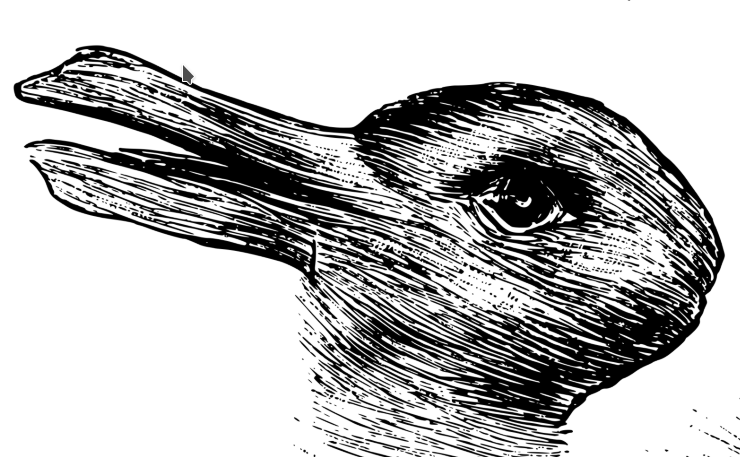
Robert Ardrey & Richard Dawkins: their use of the Necker cube
The “extended phenotype” is a phrase I collected on reading the book of the same name by Richard Dawkins. It's where that word 'meme' as idea brain parasitic replicate was born. At the time in the early 90s I thought we could move onto talking about 'rede's and interpretive viewpoints about epigenetics but the cybertroll bros have potholed us on memes at the moment.
In that book Dawkins uses the metaphor of the necker cube “to Janus dance” as I put it, between the flickering viewpoints of the body as individual which evolution selects, and the view of the genome which is the core of evolutionary information and for which the body is a mere vector, or beast of burden.
So it was interesting to me that in the mid-1960s Robert Ardrey in The Territorial impulse also uses this metaphor of the ‘psychologist’s cubes’ to Janus dance the threshold of perspective between the individual body, but with it’s territory.
These cubes of Dawkins and Ardrey overlap (see discussion below).
One could flit between all levels, generally the science do not do that, and prefer to set up a new department or faculty to investigate each level of notice.
So we then avoid the question is how are we to keep that in mind as we investigate the science of biological life without engaging in bad metaphysics, (the new separate departments are a type of prophylactic to ward off metaphysics) and more importantly engaging in the good, which I then might label the poetics of ecoplexity.

Discussion
In Dawkin’s Janus dance of the necker vube of genotype/phenotype, there is the genome and its selfish gene selection space, and this broadens out into the body which protects and transmits and mixes those processes, such that we regard the individual of body/genome) as the level where natural selection operates primarily on the body as an expresssion of that genotype and that expression is called its phenotype (not all genes are expressed, not all DNA carries expressible genes but is reproduced anyway) . Anything else the body might do as a discrete individual Dawkins calls the extended phenotype, this includes: cocoons, tool-use, home ranges, social groups. For Dawkins on one side or viewpoint there is the genotype and on the other is the phentotype of the body and it’s extension. We need to view both not just one.
Ardrey’s dance, as he is of an older generation for whom genetics was a newfangled idea, uses the necker cube metaphor between the body and the territory, which Dawkins sees as both part of the phenotype with its extensions.
At this point you can already see me neckering between those two viewpoints to launch into statements like it’s figure/ground all the way down. And up.
An interesting point about both these books is that they both follow the author’s first big selling title which made their name. Both deal with evolution of course, human evolution the case of Ardrey’s African Genesis and the new findings coming out of Africa of early Homo sps., and by which Ardrey took on the role of proponent for the ‘Man the hunter’ thesis. For Dawkins the success was for The Selfish Gene which similarly pigeon-holed or platformed his public face in a similar way, as if he was Gene the hunter.
So it is interesting both reflect on the viewpoint of the ground in their second books to their figures in their first books, and do so by way of the same visual model of the necker cube as they reflect on the context of their first books’ subjects.
As a side note wikipedia reminds me that Robert J. Sawyer use the word necker as a verb in his science fiction novels, meaning to actively flit between perspectives. This is a learned skill, while for vampires in Pete Watt's vampire novels it is a defining feature that they can see both interpretations simultaneously.
This is pure fantasy. Surely. Looks sideways at large language models mapping of our language use.
Robert Ardrey. The Territorial Imperative: A Personal Inquiry into Animal Origins of Property and Nations; Illustrated by Berdine Ardrey. London: Collins, 1967
Dawkins, Richard. The Extended Phenotype: The Long Reach of the Gene. Oxford: Oxford University Press, 1983.
